How Plants Can Alleviate Hayfever Symptoms
It’s mid-spring, and the office is buzzing. Though, not just with the usual workflow but with the constant sneezing, sniffles, and discomfort of hayfever sufferers. Hayfever, or allergic rhinitis, can turn prime productivity hours into a struggle for relief among the pollen-afflicted.
If you suffer from hay fever, you know how debilitating the symptoms can be. But did you know that certain plants can actually help alleviate these symptoms? In this blog post, we will explore how plants can provide relief for hay fever sufferers.
According to health surveys, approximately 30% of the adult population suffers from allergic rhinitis, with a notable spike during high pollen seasons. Studies highlight that hayfever sufferers often experience decreased concentration, increased absenteeism, and impaired performance, but there are some things you can do.
In this blog, we will cover:
- The Benefits of Plants for Hayfever Relief
- Best Plants for Hayfever Symptoms
- How To Choose The Best Plants For You.
- How to Incorporate These Plants Into Your Space
- Conclusion: Embracing the Power of Plants for Hayfever Relief
- FAQ
__________________________________________________________
The Benefits of Plants for Hayfever Relief
Hayfever can cause a range of symptoms, including sneezing, itching, and a runny nose. These symptoms can make it difficult to go about your daily activities and enjoy the outdoors. However, incorporating certain plants into your environment can have significant benefits for hay fever relief.
Plants have the ability to purify the air by removing allergens and pollutants, such as pollen and dust, from the environment. This can help reduce the severity of hay fever symptoms and provide relief for sufferers. The landmark NASA Clean Air Study identifies several plants, such as the spider plant or peace lily, as champions in absorbing airborne toxins.
In addition, plants release moisture into the air through a process called transpiration. Maintaining optimal humidity levels is crucial for helping your hayfever symptoms, and indoor plants naturally excel in this. This can help alleviate dryness and irritation in the nasal passages and throat, which are common symptoms of hay fever, by keeping mucous membranes moist.
Furthermore, being around plants has been linked to significant reductions in stress levels, contributing to improved mood and overall well-being among workers. Given that stress can intensify hayfever symptoms, the calming presence of plants can indirectly contribute to alleviating the condition.
Overall, incorporating plants into your living space can provide multiple benefits for hay fever relief, including improved air quality, increased humidity, and a sense of tranquillity.
__________________________________________________________
Best Plants for Alleviating Hayfever Symptoms
Not all plants are created equal when it comes to alleviating hay fever symptoms. Some plants have properties that make them particularly effective in providing relief for hay fever sufferers. Others can make your symptoms worse, so be careful.
Here are our top picks:
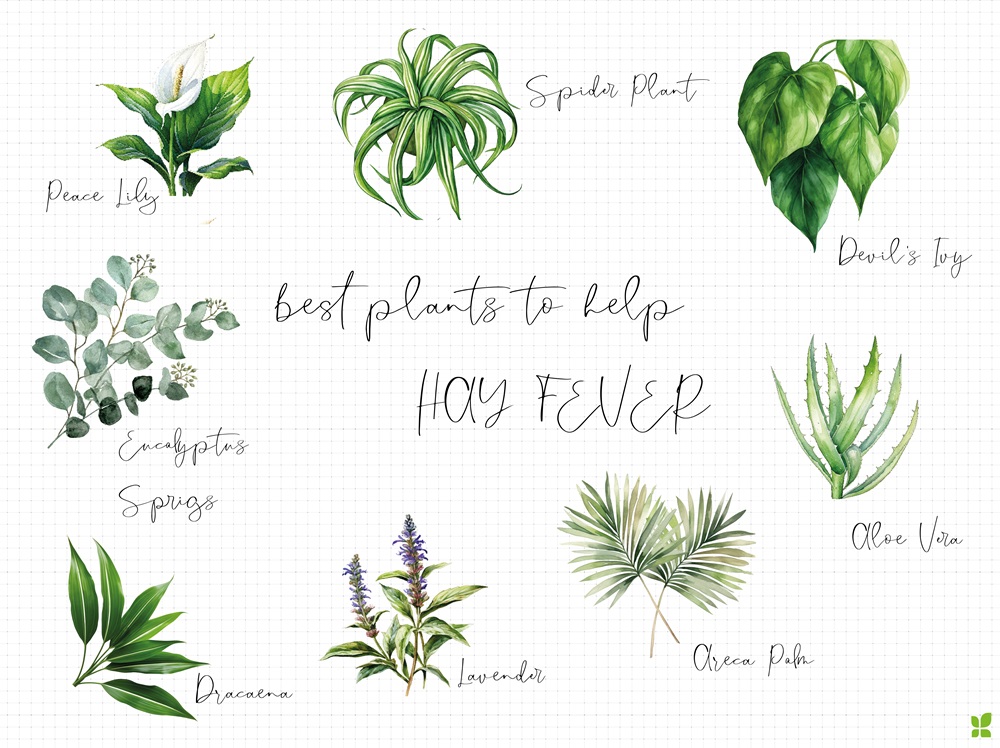
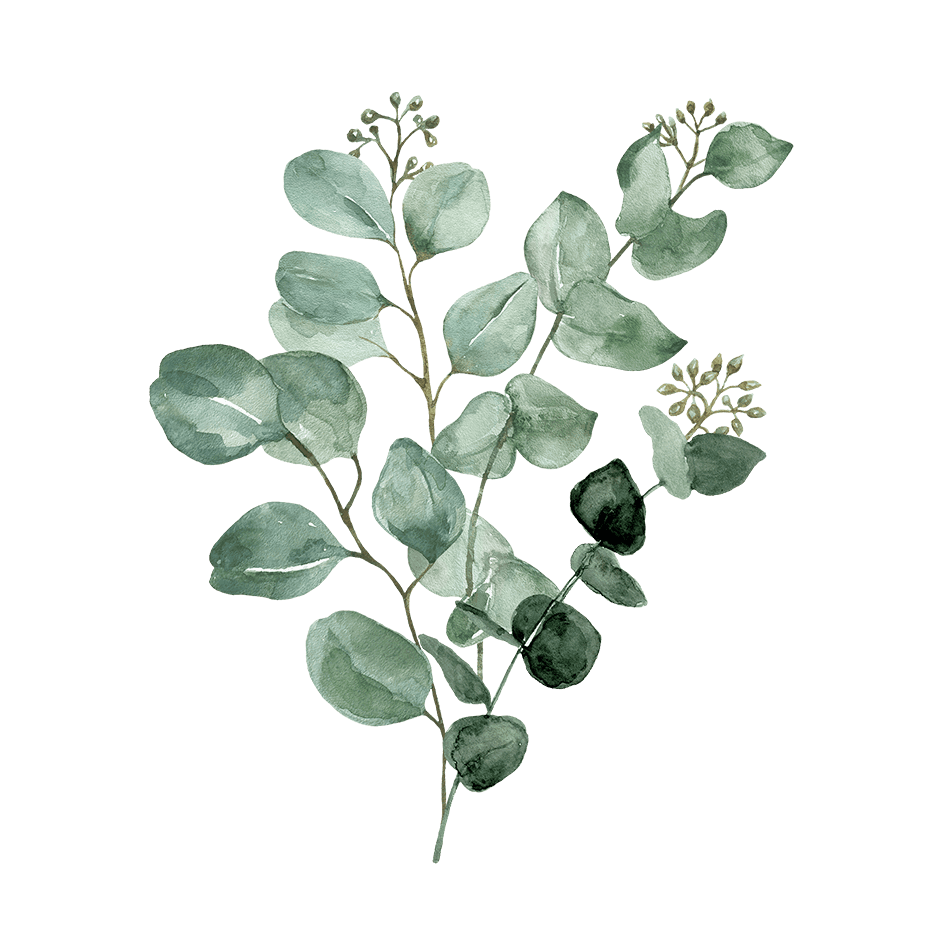
Eucalyptus Sprigs
Eucalyptus has been long used as a remedy to relieve respiratory problems, and eucalyptus oil is a popular ingredient in medicines to help open up nasal passages. The leaves of the eucalyptus tree contain decongestant and expectorant properties.
Sprigs of eucalyptus work great when placed in the bathroom to help reduce the symptoms of hay fever. When you run hot water for showers or baths, the steam enables to release of eucalyptus oils into the air, helping to relieve blocked sinuses.
Areca Palm
Areca Palm plants have generously sized leaves that are used for trapping allergens, helping to reduce hay fever symptoms. The plants are also good at increasing the natural humidity of the air inside your home.
Not to mention, they look great as décor.
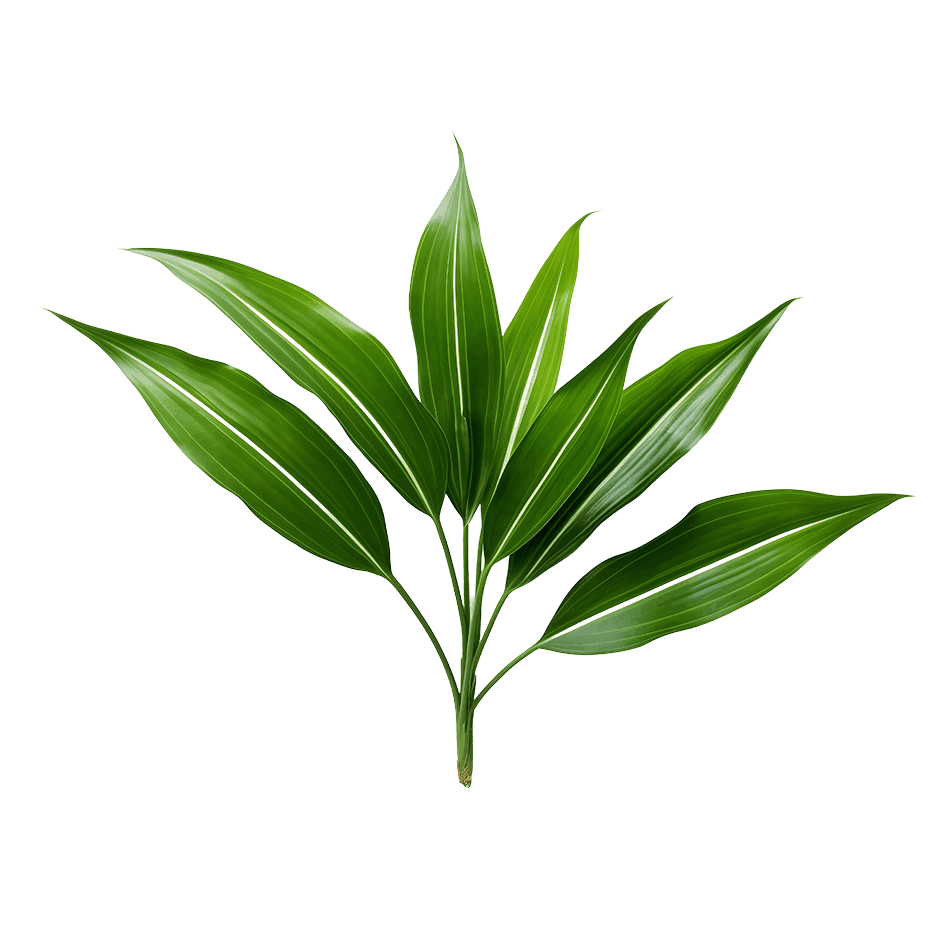
Dracaena
Dracaena plants are one of the most effective plants for removing allergens from the air.
The plant helps to remove benzene, trichloroethylene, and formaldehyde, while also absorbing carbon monoxide. This plant is commonly known for trapping allergens in the air within its leaves.
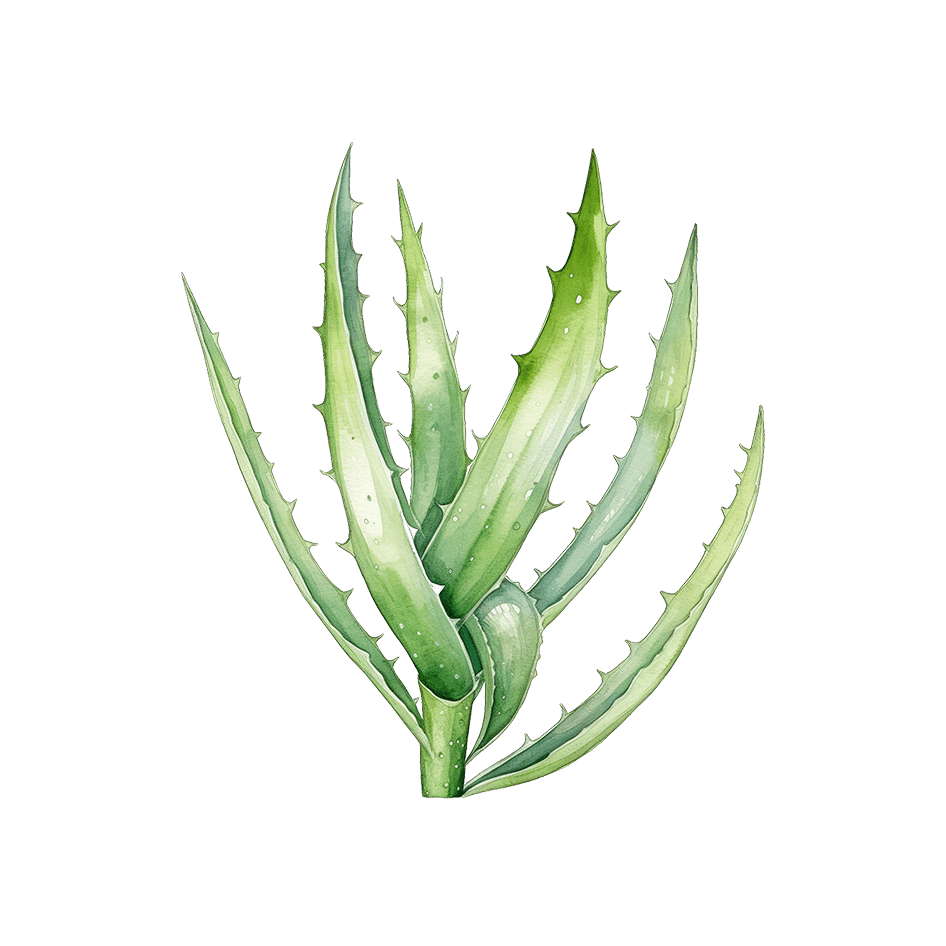
Aloe Vera
Aloe Vera produces oxygen during the night time rather than during the day.
This attractive plant helps to improve the overall air quality in your home. For this reason, Aloe Vera plants are ideal for hay fever sufferers who struggle with sleeping due to their allergies. Known for its soothing and anti-inflammatory properties, it can help reduce nasal inflammation and alleviate symptoms such as congestion and itching.

Devil’s Ivy
Devil’s Ivy is often displayed as an accent plant for shelves or walls in any room of the home. They’re very low maintenance and help to remove harmful toxins and allergens from the air in your home. Consequently, it’s a great choice for allergy sufferers who are looking to add a trailing plant to their home.
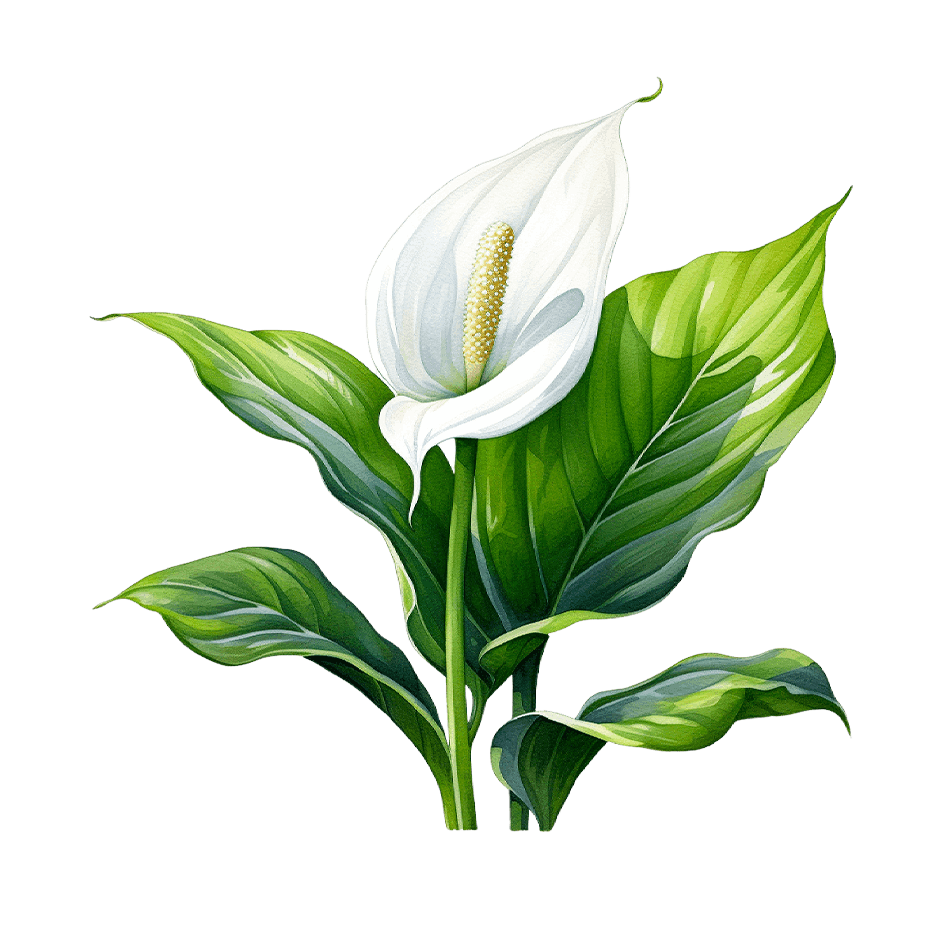
Peace Lily
Peace Lilies are low-maintenance blooms that can effectively filter formaldehyde and trichloroethylene in the air. This can help to ease the symptoms of hay fever in sufferers.
These plants work very well when placed in kitchens or bathrooms as they can also absorb and feed on mould.
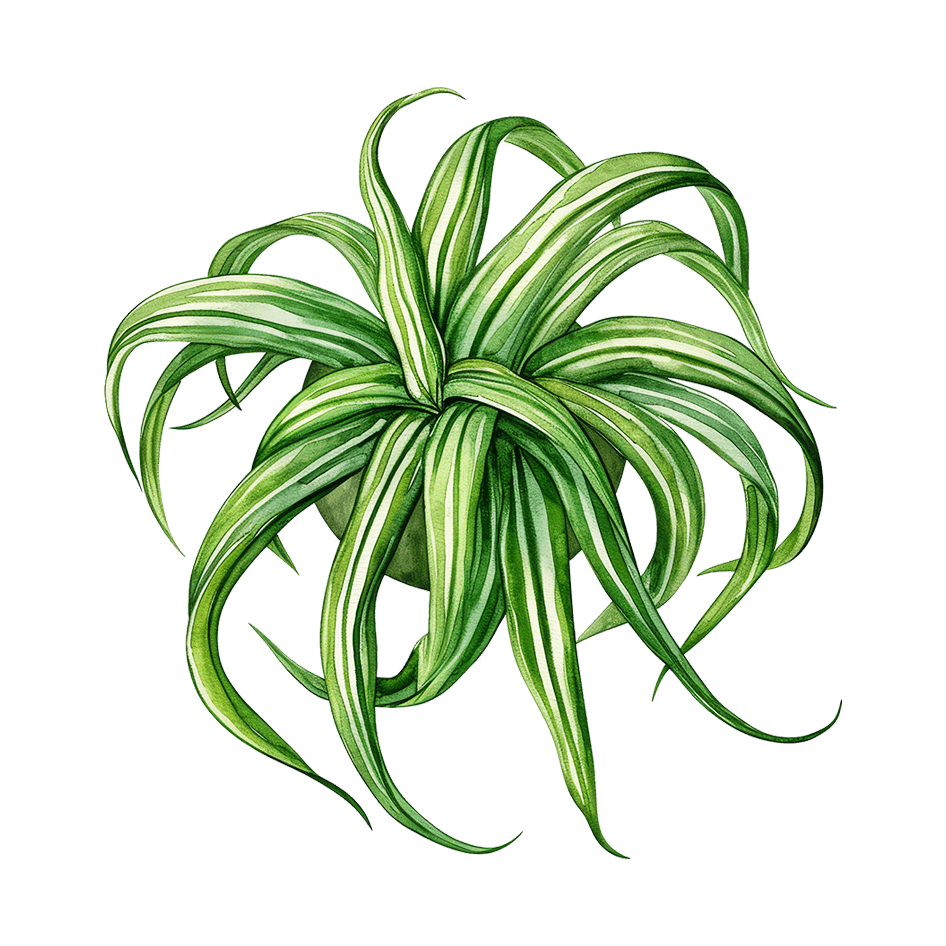
Spider Plant
Spider plants are one of the most common houseplants in the UK. These plants are very effective in tackling pollutants such as benzene, xylene, carbon monoxide, and formaldehyde. Plus, they are easy to maintain and only need to be watered once per week.
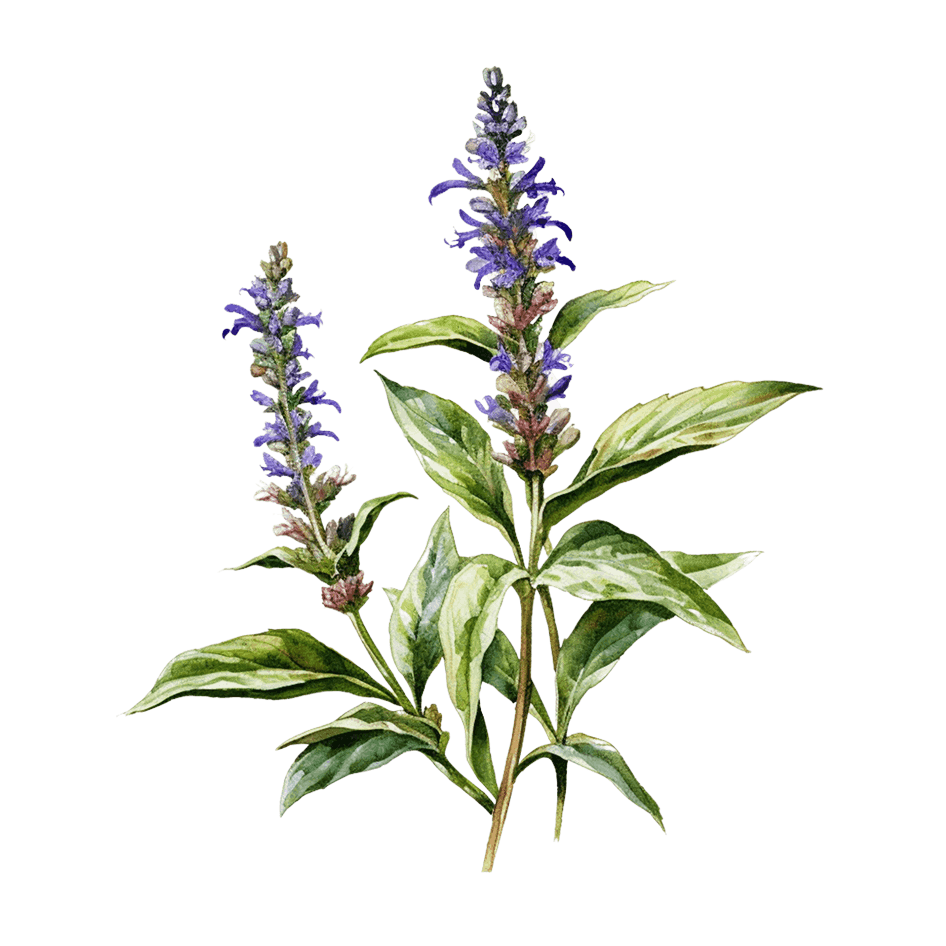
Lavender
Additionally, the lavender plant has been found to have anti-inflammatory and calming effects. The scent of lavender can help reduce stress and anxiety, which can in turn alleviate hayfever symptoms.
Others
Other plants that can be beneficial for hay fever relief include chamomile, peppermint, and nettle. These plants have properties that can help reduce inflammation, soothe irritation, and improve respiratory function.
__________________________________________________________
Choosing the right plants for you
When choosing plants for hay fever relief, it’s important to consider your specific symptoms and sensitivities. It’s a good idea to consult an allergist to confirm what’s safe will be safe for you.
By incorporating these plants into your living space, you can create a natural and soothing environment that helps with hay fever relief.

__________________________________________________________
How to Incorporate These Plants Into Your Space
Now that you know which plants can provide relief for hayfever symptoms, the first step is to learn how to incorporate them into your home.
- First, consider the placement of the plants. It’s best to place them in areas where you spend a significant amount of time, such as the bedroom or living room. This will allow you to benefit from their air-purifying and soothing properties throughout the day.
- Next, choose the right type of plant containers. Opt for containers that have drainage holes to prevent overwatering and ensure proper air circulation around the roots. You can also consider using decorative pots or hanging planters to add a touch of aesthetic appeal to your space.
- When it comes to caring for the plants, make sure to provide them with the right amount of sunlight and water. Different plants have different light and water requirements, so it’s important to do your research and follow the care instructions for each plant. We know it can be tricky to care for plants, that’s why we created the ultimate guide to plant care so hours of googling can be saved!
- Finally, consider complementing the plants with other natural elements. For example, you can incorporate essential oils or natural scents into your space to enhance the calming and soothing effects of the plants. You can also decorate with natural materials, such as wood or stone, to create a harmonious and nature-inspired atmosphere.
Next, you should aim to get planting schemes installed in your workspaces, making areas that are not only beautiful but also beneficial for hay fever relief.

__________________________________________________________
Conclusion: Embracing the Power of Plants for Hayfever Relief
Hayfever can be a challenging condition to live with, but it doesn’t have to control your life. By embracing the power of plants, you can find relief from your hayfever symptoms in a natural and sustainable way.
Plants offer numerous benefits for hay fever relief, including improved air quality, increased humidity, and a sense of tranquillity. Certain plants, such as aloe vera, eucalyptus, and lavender, have properties that make them particularly effective in alleviating hay fever symptoms. And, if you’re worried about maintenance, simply look at our Ulitmate Guide To Plant Care.
Incorporating these plants into your living space can create a natural and soothing environment that promotes hay fever relief. By also exploring other natural remedies and adopting a healthy lifestyle, you can enhance the benefits of plants and find holistic relief for your hayfever symptoms.
Advocate for, or initiate, the greening of your workspace today and breathe easier tomorrow. Contact us.
__________________________________________________________
FAQ
What Is Benzene & What Are Its Effects?
What Is Trichloroethylene & What Are Its Effects?
What Is Formaldehyde & What Are Its Effects?
What Is Carbon Monoxide & What Are Its Effects?
What Else Can I Do To Help With Hay Fever?



Recent Comments